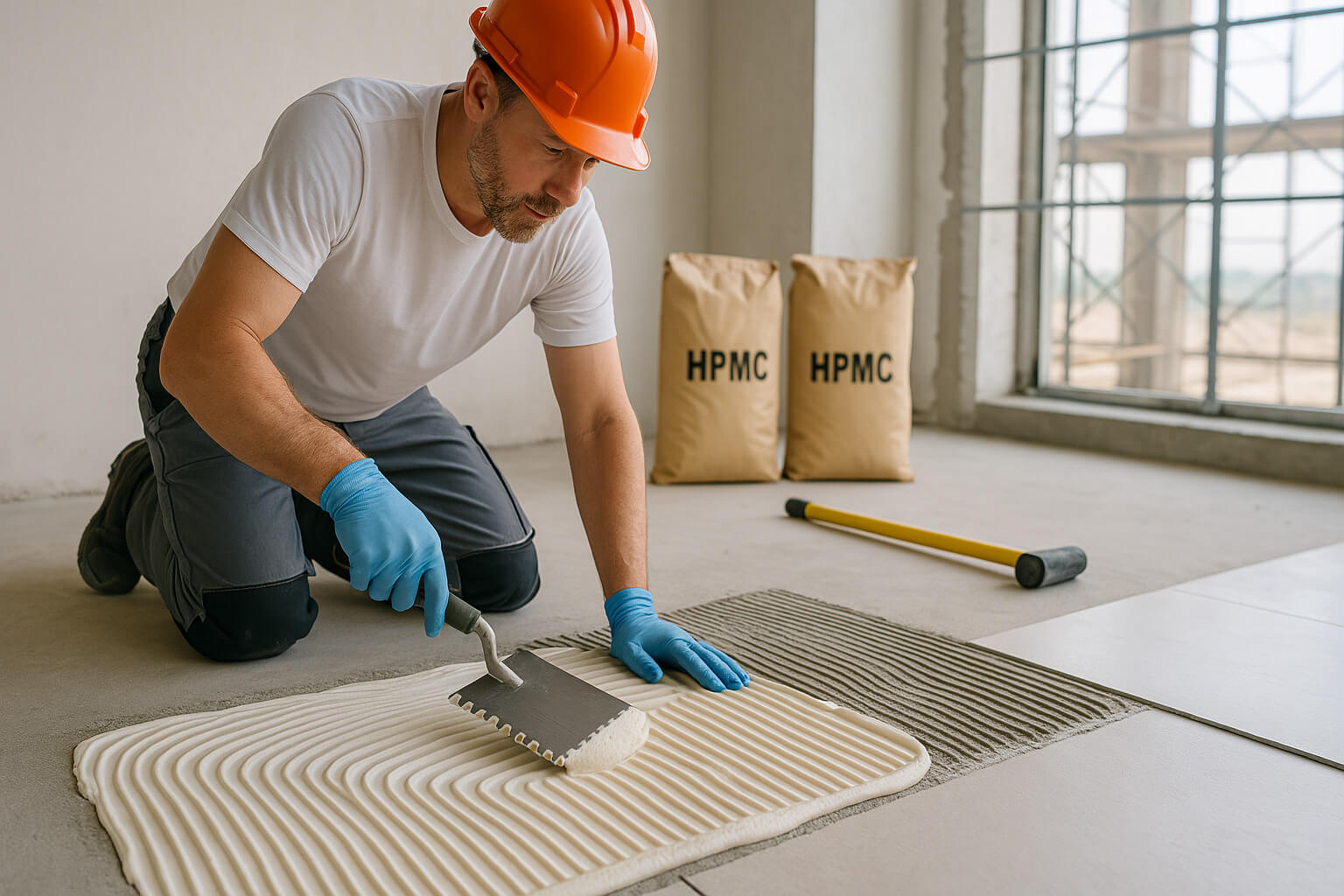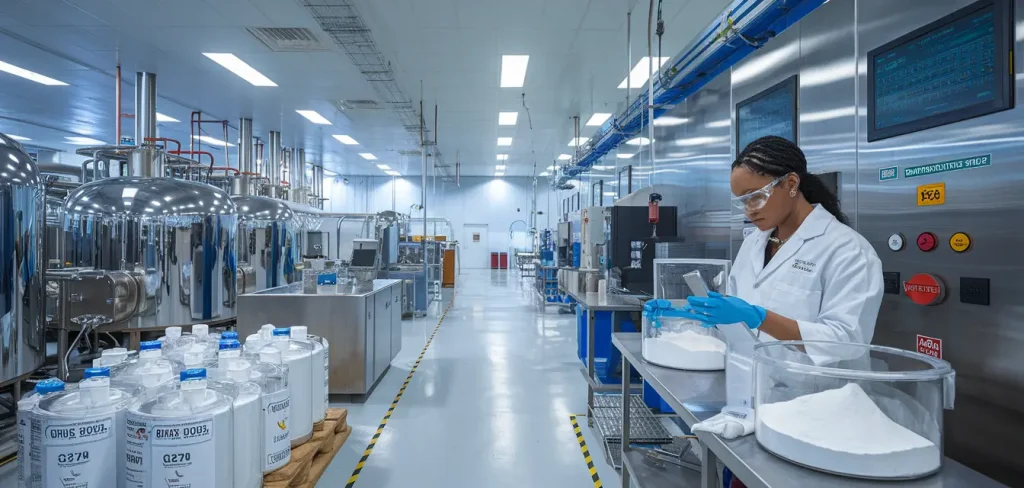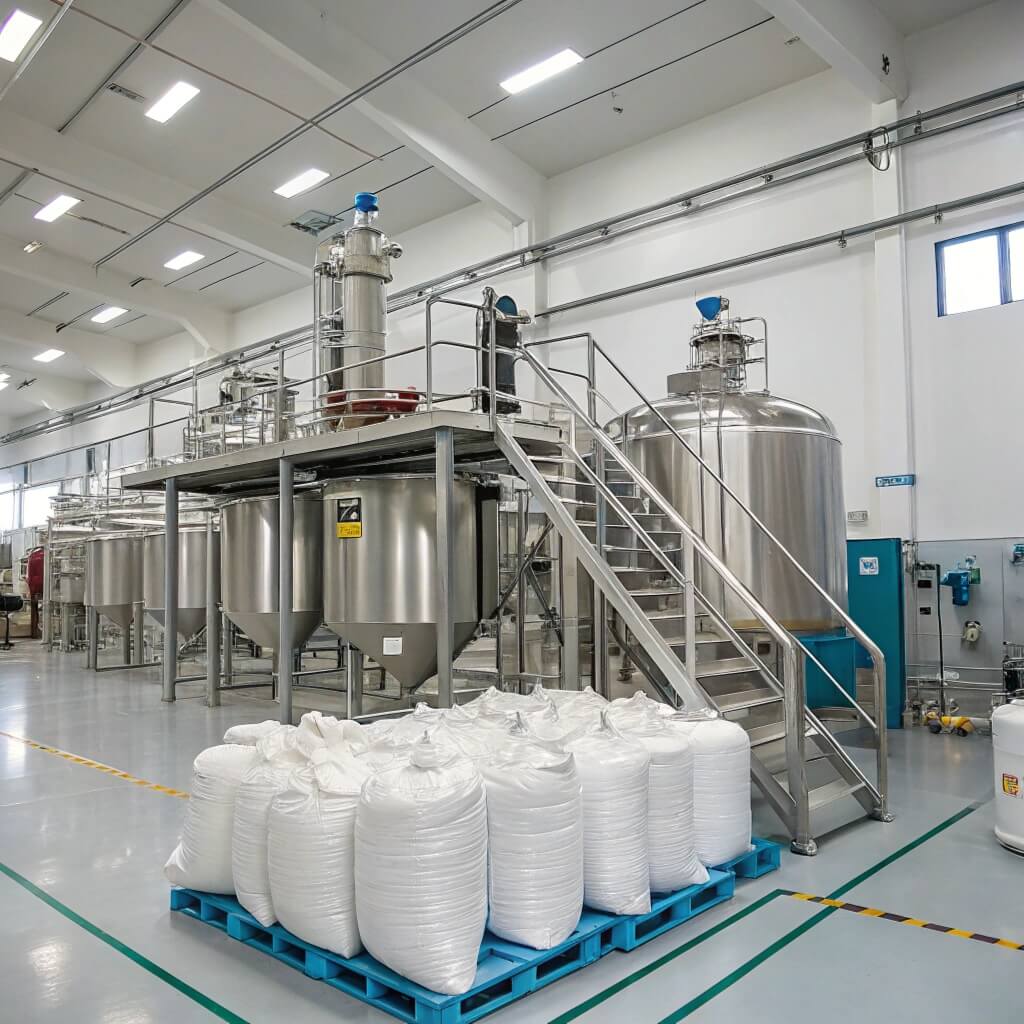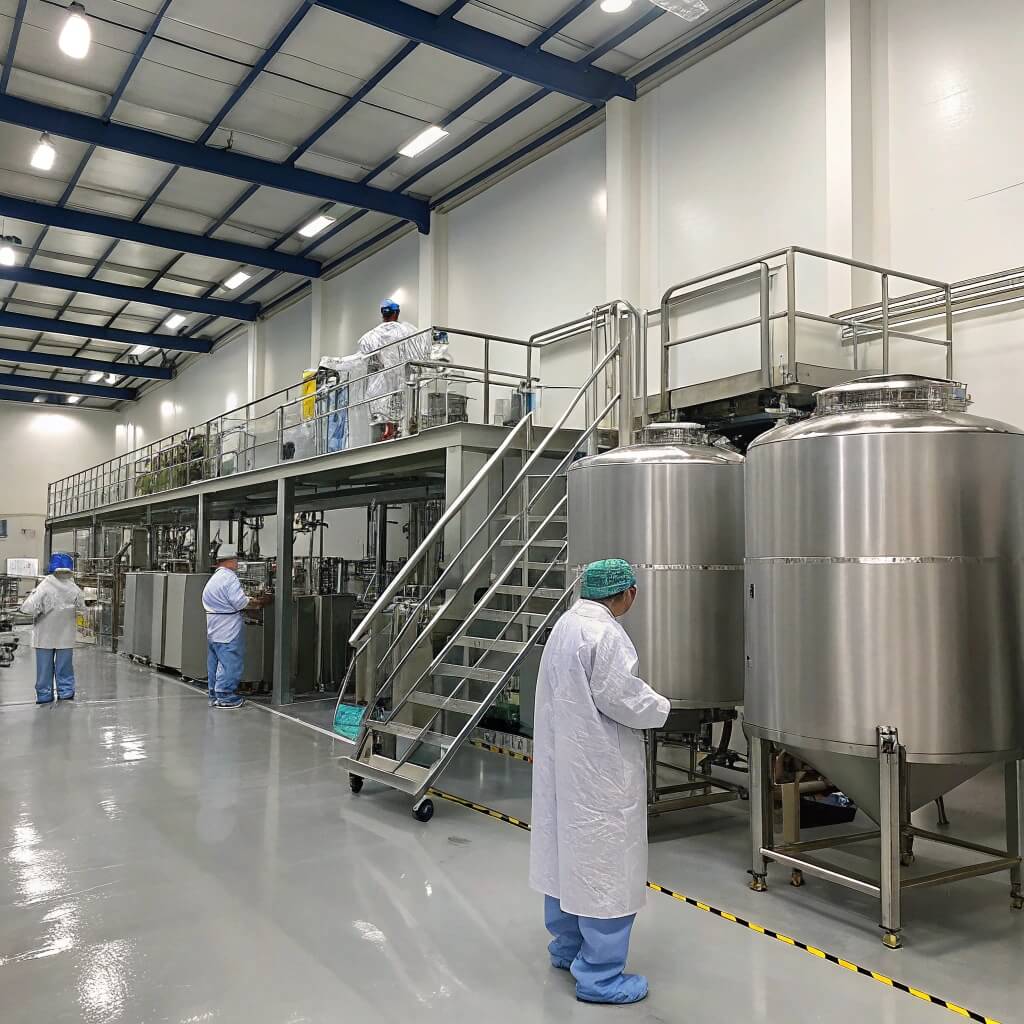Struggling with tile adhesives that dry too fast or don't spread smoothly? This problem can ruin entire installation projects.
Yes, HPMC significantly enhances workability in tile adhesives by controlling water retention, improving open time, and creating optimal consistency for application. Our factory tests show HPMC can extend working time by up to 300% compared to formulations without cellulose ethers.

Professional tile installer applying HPMC-modified adhesive that maintains perfect consistency throughout the installation process
We've spent over a decade perfecting HPMC formulations specifically for tile adhesive applications. Let's explore how this versatile cellulose ether transforms ordinary mortar into high-performance adhesive with superior application properties.
What makes workability critical in tile adhesive performance?
Poor workability means wasted materials and failed installations. Every tile setter knows this frustration.
Workability directly impacts installation success by affecting how easily the adhesive spreads, how long it remains usable, and how well it maintains proper thickness under tile weight. According to industry standards for ceramic tile installation, poor workability can significantly increase labor costs and reduce quality. Our production team has found that workability issues cause approximately 40% of all tile installation failures, ahead of both adhesion strength and water resistance problems.
When we talk about workability in tile adhesives, we refer to several key properties:
- Open time - The period during which the adhesive remains tacky enough to form proper bonds
- Slip resistance - The ability to hold tiles in place without sliding
- Sag resistance - Prevention of downward movement when tiles are placed on vertical surfaces
- Konsistenz - The smooth, creamy texture that allows for even spreading
- Wassereinlagerungen - The ability to hold enough moisture for proper cement hydration
These properties work together to create an adhesive that's easy to apply and provides sufficient time for tile placement and adjustment. Without good workability, even the strongest adhesive formulation will yield poor results. This is why proper selection of HPMC is critical in tile adhesive formulations.
How does HPMC function in tile adhesive?
Tile adhesives become sticky messes or dry out too quickly without proper additives. HPMC solves this common problem.
HPMC acts as a water retention agent and rheology modifier in tile adhesives. As research in the Journal of Building Engineering confirms, cellulose ethers create essential performance properties in cementitious systems. It forms a protective colloid around water molecules, slowing evaporation and maintaining optimal moisture for cement hydration. At our manufacturing facility, we've observed that properly formulated HPMC can retain up to 70% of mixing water for more than 24 hours.
The molecular structure of HPMC enables several critical functions in tile adhesive:
First, its hydroxypropyl and methoxy groups create hydrogen bonds with water molecules, forming a three-dimensional network that thickens the adhesive. Second, this network slows water migration, giving cement particles time to hydrate fully and develop maximum strength. Third, HPMC modifies the rheological properties of the mortar, making it thixotropic – stiff at rest but fluid under pressure.
Our laboratory testing confirms that different substitution levels and molecular weights of HPMC produce varying effects on adhesive performance. For example, higher viscosity grades typically provide better water retention but may reduce workability if used in excess. This is why we carefully control the substitution process to achieve the optimal balance for tile adhesive applications.
What are the workability benefits of using HPMC in tile adhesives?
Tile setters struggle with adhesives that set too quickly or don't spread evenly. Without HPMC, these issues can make installation nearly impossible.
HPMC delivers multiple workability benefits that transform cement mortars into professional-grade tile adhesives. Based on our production experience and customer feedback, HPMC improves open time by 200-300%, significantly reducing waste from premature setting. According to technical guidelines from the European Committee for Standardization, proper open time is critical for installation quality. It also creates the ideal creamy consistency that allows for smooth, even spreading with notched trowels.
The key workability improvements from HPMC include:
Extended Open Time and Adjustability
HPMC dramatically extends the period during which tiles can be placed and adjusted. In our testing laboratory, we've compared standard mortar mixes to those containing our HPMC and found that open time increased from approximately 10 minutes to over 30 minutes. This gives tile installers crucial flexibility, especially for complex installations involving cuts and patterns.
Additionally, HPMC helps maintain the right amount of moisture at the surface, ensuring proper wetting and bond formation between the adhesive and tile. This is particularly important for low-porosity tiles like porcelain, which require longer contact time to form strong bonds.
The adjustability provided by HPMC also reduces waste significantly. Our customers report up to 15% reduction in material waste when using properly formulated HPMC-containing adhesives compared to basic cement mortars.
How does HPMC influence the setting and performance of cement-based adhesives?
Without proper additives, cement-based adhesives often set unevenly, leading to hollow spots and weak bonds. This is a major source of callbacks and repairs.
HPMC creates a balanced setting process by regulating water availability throughout the cement hydration phases. Research published in Construction and Building Materials journal demonstrates the impact of cellulose ethers on cement hydration kinetics. Our laboratory studies show that properly formulated HPMC maintains optimal moisture levels for 24-72 hours, allowing cement to develop full strength potential. This is crucial for achieving adhesive bond strengths that exceed international standards like EN 12004 and ANSI A118.
During the setting process, HPMC influences several critical performance aspects:
First, it prevents "flash setting" by maintaining adequate water content even at the surface layer that's exposed to air. Second, it promotes more complete cement hydration by ensuring water remains available longer, resulting in higher ultimate strength. Third, it improves adhesion to difficult substrates by maintaining proper moisture at the interface.
We've observed in our factory testing that HPMC-modified adhesives typically achieve 15-25% higher tensile adhesion strength compared to unmodified formulations. This is particularly evident in tests involving thermal cycling and water immersion, where moisture management during setting plays a crucial role in long-term durability.
The delayed water evaporation provided by HPMC also reduces the risk of cracking and improves the adhesive's ability to accommodate minor substrate movement. Our technical team has documented up to 40% improvement in deformability when comparing standard C1 adhesives to HPMC-modified C2S formulations.
What factors determine the effectiveness of HPMC for tile adhesive?
Some tile adhesives perform inconsistently despite containing HPMC. This happens when manufacturers choose the wrong grade or viscosity for specific applications.
The effectiveness of HPMC in tile adhesives depends primarily on viscosity, substitution type, particle size, and purity. The American National Standards Institute provides specifications for performance levels in different adhesive applications. In our production facility, we've found that medium viscosity grades (30,000-70,000 mPa·s) generally provide the best balance of water retention and workability for most tile adhesive applications.
| Faktor | Auswirkungen auf die Leistung des Fliesenklebers | Optimal Range for Most Applications |
|---|---|---|
| Viskosität | Controls water retention and consistency | 30,000-70,000 mPa·s |
| Methoxylgehalt | Affects solubility and water retention | 19-24% |
| Hydroxypropyl Content | Influences surface activity and compatibility | 7-12% |
| Partikelgröße | Determines dissolution rate and smoothness | 100-200 mesh |
| Reinheit | Impacts consistency and performance reliability | >98% |
Beyond these basic parameters, environmental factors also play a crucial role in HPMC performance. Temperature and humidity significantly affect water retention and setting time. Our testing shows that at 35°C, open time can decrease by up to 50% compared to standard 23°C conditions. This is why we offer specialized grades for extreme climate applications.
The substrate also influences HPMC effectiveness. Highly absorbent substrates like aerated concrete or dry plaster can quickly draw moisture from the adhesive. In these cases, higher viscosity HPMC or increased dosage may be necessary. Through our technical support services, we help customers adjust formulations based on their specific application environments.
How can formulators choose the right HPMC grade for tile adhesives?
Selecting the wrong HPMC grade leads to inconsistent adhesive performance. This results in customer complaints and damaged reputation.
Formulators should select HPMC grades based on specific application requirements, climate conditions, and tile types. According to ISO standards for building adhesives, performance requirements vary significantly by application class. Our technical team recommends starting with a viscosity assessment that matches the intended use case. For standard ceramic tile applications on floors, a 40,000-50,000 mPa·s grade typically provides excellent balance of open time and slip resistance.
When choosing the appropriate HPMC for tile adhesives, consider these factors:
First, evaluate the tile type and size. Large-format porcelain tiles require HPMC with higher water retention to ensure sufficient open time during installation. Second, consider the substrate type and condition. More absorptive substrates need HPMC with greater water retention capacity. Third, assess the local climate conditions. Hot, dry environments demand HPMC with enhanced water retention properties.
We've developed a comprehensive testing protocol for formulators that includes:
- Water retention evaluation at multiple time intervals (15, 30, 60 minutes)
- Rheology assessment to ensure proper consistency and thixotropic behavior
- Open time testing under varied temperature and humidity conditions
- Slip resistance verification with different tile weights and sizes
By following this approach, our customers have successfully formulated tile adhesives for diverse applications ranging from small mosaics to large-format porcelain panels. Our technical support team regularly conducts on-site evaluations to help customers fine-tune their formulations for specific regional requirements.
FAQs
What is HPMC for tiling?
HPMC for tiling is a cellulose ether that modifies water retention and rheology in cement-based adhesives. It creates the ideal consistency for application while extending open time by forming a protective colloid around water molecules. We manufacture HPMC with specific substitution patterns optimized for tile adhesive performance.
Warum trocknet Fliesenkleber nicht?
Tile adhesive might not set properly due to excessive HPMC dosage, extremely low temperatures, or applying over sealed/non-absorbent surfaces. Our testing shows that overdosing HPMC beyond 0.5% can significantly delay setting. Proper formulation balances water retention with cement hydration rate for optimal setting.
What is the use of HPMC in concrete?
HPMC improves concrete workability, water retention, and cohesion by forming a polymer network that temporarily binds water. In our production facility, we've found that HPMC enhances pumping ability of concrete while reducing bleeding and segregation. It's particularly valuable in shotcrete and repair mortars that require good cohesion.
What should be used when applying tile adhesive?
Use a notched trowel matched to tile size, clean mixing equipment, and proper substrate preparation when applying tile adhesive. Our field tests confirm that correct trowel selection ensures optimal adhesive coverage (minimum 80% for interior, 95% for exterior applications). Always follow manufacturer recommendations for mixing ratios and consistency.
Abschluss
HPMC transforms ordinary cement mortars into high-performance tile adhesives by significantly enhancing workability, open time, and application properties. Throughout our decade of manufacturing experience, we've consistently seen how the right HPMC grade dramatically improves installation success rates and reduces material waste.
The benefits of properly formulated HPMC in tile adhesives extend beyond workability to impact final installation quality and longevity. By controlling water retention, HPMC ensures optimal cement hydration, leading to stronger bonds and more durable installations. This is particularly important for challenging applications like exterior tiling, large-format tiles, and high-traffic areas.
Contact Morton for customized HPMC samples specifically formulated for your tile adhesive applications. Our technical team can recommend optimal grades based on your specific manufacturing conditions and target markets.




